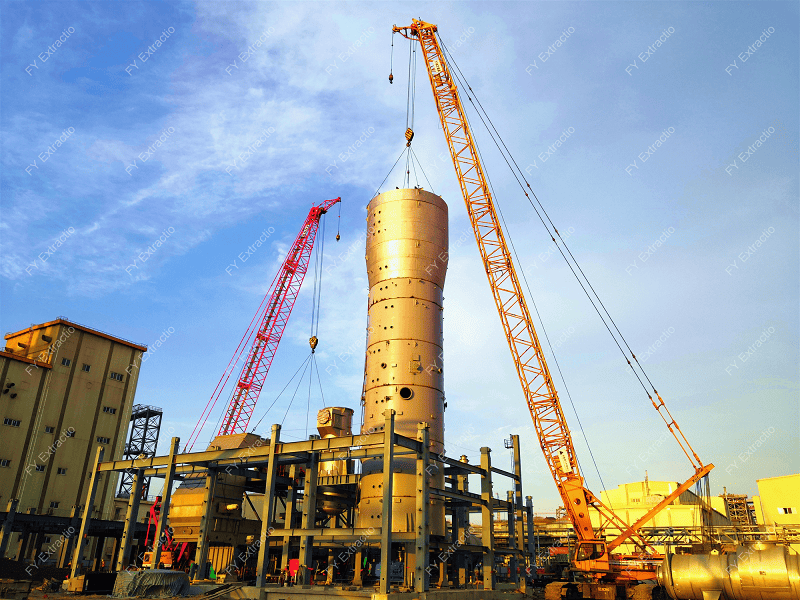ISO 9001 Certified
Oil Pretreatment And Oil Pressing
Oil pressing and pretreatment techniques are essential for maximizing the extraction of edible oils. These techniques involve cleaning, crushing, and conditioning oilseeds to improve their oil yields. In this section, we will introduce the various techniques used in oil pressing and pretreatment to achieve optimal results.
Common Edible Oil pretreatment methods and Oil press introduction
Before oil production, first it needs to make pretreatment on the oil seeds. The equipment configuration is according to different kinds of oil seeds species. After pretreatment, it can increase the oil yield rate,improve the oil and cake (or meal ) quality, it is key process during oil production. It can be continuous and full computer control process. Suitable for soybean, rapeseed, cottonseed, sunflower seed, groundnut, corn germ, rice bran, safflower seed, tea seed, sesame, palm fruit, walnut,etc.
The common process of oil seeds pretreatment process may include:
- Soybean: Cleaning-Cracking-Husking-Soften-Flaking-Expand/press
- Rapeseed: Cleaning-Soften-Flaking-Press
- Groundnut/Cottonseed/Sunflower-Husking-Kernel&Husk separation-Flaking-Press
- Sesame: Cleaning-Cooking-Press
- Palm fruit: Sterilization-Threshing-Digesting-Press-Clarification
- Rice bran: Cleaning-Bran&broken rice separation-Expand
The oil pressing process typically involves crushing the oilseeds to remove the oil, which is then filtered and refined to produce a high-quality edible oil. In recent years, there has been a growing demand for edible oils that are produced using sustainable and environmentally friendly methods, and edible oil presses have played a crucial role in meeting this demand.

Explore FY Extractio's Solution
Oil Pretreatment and Oil Press Glossary
Cleaning
A general term for the process of removing impurities from oilseeds.
Vibraing screen separation
Using sieve holes to separate impurities based on particle size, thickness, and length difference between the oilseeds and impurities.
Gravity Separation
According to gravity difference between oilseeds and impurities(Especially stone particles), utilize the air flow and screen surface to remove the impurities and sort the suitable oilseeds.
Winnowing/Air-classification
Wind-powered method of removing impurities, using the difference in suspension speed between oilseeds and impurities.
magnetic separation
A method of removing magnetic metal impurities from oilseeds by magnetic force.
removal of mud balls/same-size with oilseeds
Also called “mud removal from side-by-side”. Using mechanical force to crush mud balls similar to oilseeds and then removing them by screening or wind.
oilseed moisture conditioning
The process of making oilseeds reach a specified moisture range.
Oilseed drying
Bringing high moisture oilseeds down to the right moisture.
air drying
Make oilseeds dry by high speed movement of oilseeds and hot dry air in the pneumatic drying tube.
oilseed hulling
Mechanically removing the husk from oilseeds.
kernel husk separation
Separating the kernel from the husk and whole seed after shelling.
oilseed Husking
The process of removing the seed coat from oilseeds, soybeans, peanuts, etc.
Rate of hull in kernel
A percentage of the total amount of hull that is left in the kernel after separation.
rate of kernel in hull
A percentage of the kernel in the hull after the hull has been separated from the kernel.
rate of perfect kernel
Percentage of intact kernels in total kernels after shelling.
cracking/crushing
Process of mechanically reducing an oilseed’s particle size.
conditioning/softening
A process that makes oilseeds softer and more plasticity by conditioning the moisture and temperature.
flaking
Also known as “flaking” or “rolling”. Machinery presses oilseeds from granules to flakes.
flake
A thin flake of oilseeds material after rolling.
flake thickness
A flake’s thickness after rolling.
fines content
A material’s powder percentage by weight.
cooking
Transforming raw embryos into mature embryos by wetting, heating, steaming, and frying, which results in certain physical and chemical changes. Also known as “frying”. To denature the protein, the oilseeds is heated and stirred to remove the moisture.
cooked flakes
Material made by steaming and frying.
single pressing
The process of pressing the oilseeds only once.
twice pressing
The process of passing the material through the press twice to minimize oil residue.
pre-pressing
It’s a pressing method that leaves a lot of residual oil in the cake for leaching. High oil content materials usually benefit from pre-pressing-leaching. Due to low chamber pressure, thicker cake, and higher throughput, pre-pressing increases production capacity and reduces equipment wear.
cold pressing
Pressing oil at room temperature or low temperature without frying it. In comparison with hot pressing, the temperature is lower, below 65°C and up to room temperature. However, there’s still a lot of residual oil in the cake. Cold pressing is done with a special cold press.
pressed oil
The oil is extracted from oilseeds by mechanical pressing. Consumers love pressed oil because it has a unique taste, retains nutrients.
pressed cake
Cake left over after the oil is pressed by hydraulic or screw types of machines. Because the oil has to be steamed and fried before pressing, 105℃ or more, and the temperature must be kept constant during the pressing process, 100℃~135℃, so the protein in the cake residue is denatured and degraded, which is not conducive to the reuse of the cake residue protein.
Cold pressed cake
Cake residue left over after cold pressing oil. Since cold pressed cake isn’t heated, its permeability and diffusivity are lower than hot pressed cake, so the residual oil rate is higher too. A cold pressed oil doesn’t get steaming or frying before it gets pressed, so the oil temperature is normal or slightly higher than normal. Because the material temperature is lower during pressing, the cold pressed cake keeps all the protein and other active ingredients in the oil.
requirement for pressing/extraction
Material entering the press or leach must meet moisture, temperature, and embryo thickness requirements.
cooked flakes ready for pressing
Also known as “pressing material”. Cooked flakes ready to go into the press for pressing.
oil route
Also known as “oil flow route”. The path the oil flows through when it’s pressed out of the cake.
hydraulic pressing
An oil production method that uses a hydraulic press to press oil out of cake.